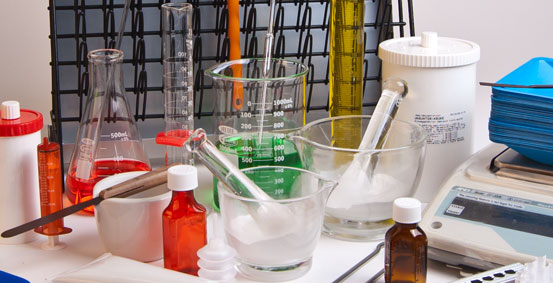Tips for “Cash Compounding” Pricing
Posted by Emily Thompson on Sep 2nd 2020

Deciding whether or not to accept insurance for compounded medication can be a big decision. As a healthcare provider, we have a responsibility to offer the patient a fair price, or copay. However, billing insurance can be a major task, considering the efforts third parties take to deter coverage of a compounded medication. This can put you in a position to offer the compound at a price that is determined by you, the pharmacy. Determining price can be quite tricky. Here are a few things to consider when offering a cash price for a compound:
What are your competitors charging?
Many times you will be asked by the patient, “What is your price for my medication?”. This should prompt you to ask if they’ve been on this medication before and, if so, where they received it last. Often times, they will tell you what you paid.
Minimum Compounding Fee for labor – Estimated $25
This is a growing trend. To establish a fair minimum compounding fee, consider the average time it takes to make a basic compound. Remember, you are a professional and as a professional, you deserve to be paid for your services. Establishing a minimum compounding fee can prevent you from being underpaid. The last thing you want to do is give away your services. If you continue to do so, your pharmacy may not be there next month to offer the service.
Profit Margin – ideally 85% mark-up (divide cost by 0.15)
If you’re a numbers kind a person, this will make sense to you. On average, you should project an 85% mark-up to cover cost and labor. This will not always be possible, especially on high cost compounds, which will be more about profit dollars versus profit margin, therefore the minimum compound fee should take effect but certainly strive for more than that.
Are there similar products commercially available to base pricing on?
You’ll find that physicians or patients may ask you to compound a product that isn’t commercially available, but there may be drug available in the same class of therapy. An example of this would be Premarin™ Vaginal Cream. This can be a useful when determining a cap price, or maximum price, because you’ll likely not want to overprice the compound. In some cases, you’ll not be able to get the pricing as low as what’s commercially available.
Cost associated with production (i.e. equipment, personnel, supplies, etc.)
While third parties may not reimburse for your training, supplies, equipment, labor or other relevant costs, they’re still a prime factor which we must account for. Patients may have a preference, or requirement due to health factors, that ultimately affect the nature of the compound, all of which will affect the cost of the final product. Even the packaging of these medications can alter costs significantly.
Price Matching Copays – this is a key way to satisfy a patient’s expectations while omitting the hassle of third party processes (billing, prior authorizations, audits, etc.)
Many times, a compound will fall within in a higher tier, resulting in higher copays. If your cost and margin allow, it may not be a bad idea to just match the copay, or price slightly under, and do away with the hassle and time required to process the claim. Remember, cash can go directly to the bank and be spent for tomorrow’s expenses without fear of audits!
As you get more and more comfortable determining cash prices for your compounds, all of this information will be readily processed and get much easier to do.
Be sure to follow us on Facebook, Twitter and LinkedIn for up to date industry know-how.
